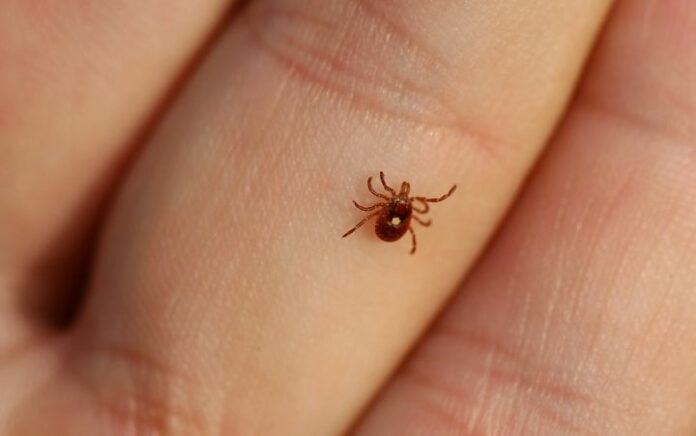In Santa CruzCounty, it is reported that less than five percent of the mature Western black-legged ticks and a somewhat higher percentage of the nymphal (baby) stage, carry the Lyme bacteria. Although many people worry after being bitten by a tick, the risk of acquiring an infection is quite low. In this article I’d like to discuss the tick bite and signs and symptoms of Lyme disease.
Neither the tick’s body nor its head burrows into the skin. Instead, the tick attaches by its mouthparts. An infected tick can transmit an infection only after it has been attached, taken blood from its host, and fed for 24 to 48 hours. If you find a tick on you that is unattached and non-engorged, it is unlikely to have transmitted an infection. Look carefully for the immature nymphal ticks, which are the size of a sesame seed. It helps to shower after clearing brush or walking in wild lands.
The proper method of removing a tick is to use a fine pair of tweezers and grasp the tick as close to the skin as possible. Pull it straight out, gently but firmly, without jerking or twisting. After removing the tick, wash your hands and the skin around the bite thoroughly with soap and water.
If, after removal, you see anything remaining in the skin, this represents tiny mouthparts of the tick. It is not the tick’s “head” and it cannot increase the risk of transmission of Lyme disease once the tick body is removed. If you are unable to remove the mouth parts easily, as you would a splinter, leave it alone and the skin should eventually heal. If you are concerned see your doctor.
Quite often, after an obvious tick bite, a red rash may develop at the site of the bite within the first 24 to 48 hours. A rash that develops this quickly after the bite is usually an allergic reaction to the saliva of the tick. It rarely grows beyond 2 inches, needs no treatment and disappears within a few days.
The actual Lyme’s rash, called erythema migrans, is reported to occur in up to 80 percent of infected tick bites. It is described as a red rash that is usually neither itchy nor painful. It develops a few days to a few weeks after a tick bite and is likely to be the first sign of Lyme disease. The rash most often continues to get larger over a period of time and will grow to be well over 2 inches, possibly 8 to 12 inches or more, and may last for several weeks. This rash may sometimes develop a pale appearance in the center, causing a bull’s eye shape.
Either during the time of the rash or shortly thereafter, other symptoms of Lyme disease may appear which resemble these common flu-like symptoms: fever and chills, malaise (achiness), headache, and achy joints.
The rash and/or the above flu-like symptoms may indicate early Lyme disease and you should see your doctor. When recognized during this early stage, most infections can be adequately treated.
If the above symptoms do not occur, are not recognized or are not treated properly, then one might develop late Lyme disease which can more severely affect different parts of the body such as the joints, the nervous system, and the heart, to mention a few.
The bottom line is that whether you are aware of a recent tick bite or not, if you develop an unusual, unexplainable rash or if you develop flu-like symptoms (without respiratory symptoms), especially outside of the flu season, you should visit your doctor and discuss the possibility of Lyme disease.
-Terry Hollenbeck, M.D., is an urgent-care physician at Palo Alto Medical Foundation Santa Cruz in Scotts Valley. Readers can view his previous columns on his website, valleydoctor.wordpress.com, or email him at va**********@*******al.net. Information in this column is not intended to replace advice from your own health care professional. For any medical concern, consult your own doctor.











